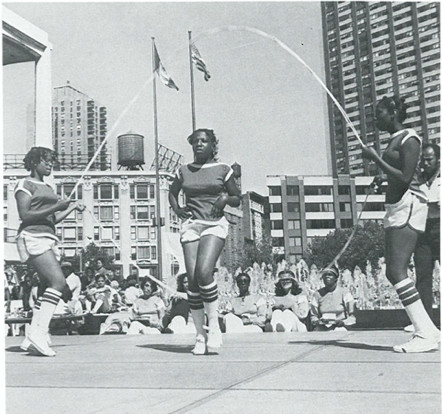
Double Dutch, a captivating and energetic form of jump rope, has a rich history that spans cultures and generations. From its humble beginnings as a childhood pastime to its resurgence as a fitness powerhouse, Double Dutch is here to stay! Join us on a journey through its fascinating history and discover how Street Ropez is playing a pivotal role in its revival!
The Origins of Double Dutch
Double Dutch has roots dating back to the 1600s in the Netherlands, where children would jump rope in pairs. The game made its way to the United States in the early 1900s, particularly in urban neighborhoods. It became popular among African American girls, where it was often used as a playful way to socialize and showcase skills.
As the game grew in popularity, so did the complexity of its movements and tricks. Children began to create rhythmic chants and songs, making Double Dutch a lively and engaging group activity. It became not only a physical exercise but also a creative outlet for expression.
The Rise of Competitive Double Dutch
By the late 20th century, Double Dutch evolved from a playground pastime into a competitive sport. The first official Double Dutch tournament took place in 1974 in New York City, organized by the National Double Dutch League. This event showcased skilled jumpers who executed intricate routines, combining athleticism with choreography.
During the 1980s and 1990s, Double Dutch gained traction in schools and community centers across the United States. Various organizations and teams formed, promoting training and competition. The sport became a powerful means of bringing communities together, fostering teamwork, discipline, and creativity among participants.
The Modern Renaissance
In recent years, Double Dutch has experienced a resurgence, spurred by a renewed interest in fitness, wellness, and nostalgic play. Street Ropez, with its innovative and stylish Double Dutch ropes, is at the forefront of this revival. The company focuses on creating high-quality equipment designed for both recreational and competitive use, catering to a new generation of jumpers.
Street Ropez emphasizes the importance of community engagement and inclusivity in their mission. They host events, workshops, and competitions, encouraging people of all ages and backgrounds to experience the joy of Double Dutch. Their vibrant ropes and supportive community help bridge the gap between the traditional and modern iterations of this beloved activity.
Street Ropez’s commitment to preserving this legacy ensures that future generations can enjoy and appreciate the art of Double Dutch.
The Benefits of Double Dutch Today
Today, Double Dutch is celebrated not only for its fun factor but also for its numerous health benefits. It provides a full-body workout, improving cardiovascular fitness, coordination, and agility. It’s also a fantastic way to relieve stress and foster social connections. With Street Ropez leading the charge, more people are discovering that Double Dutch is not just for kids—it’s a versatile activity that can fit into anyone’s fitness routine.
The journey of Double Dutch from its origins in the Netherlands to its current status as a popular fitness trend is a testament to its enduring appeal. With companies like Street Ropez championing its revival, the joy and benefits of Double Dutch continue to reach new audiences. So grab a rope, gather your friends, and join the vibrant world of Double Dutch—where history, community, and fitness collide in a beautiful dance of movement and joy!

